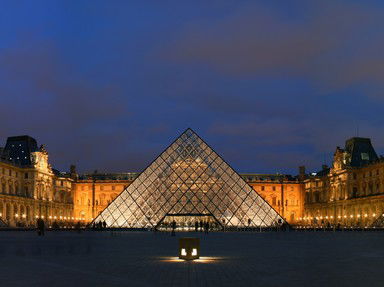
Looking Around At The Louvre! Trivia Quiz
While there are about 35,000 items typically on display at the Musee du Louvre, the museum has a collection of 380,000 objects! It has been said that it would take a person two months and eight miles of walking to see all of them!
A collection quiz
by ponycargirl.
Estimated time: 3 mins.